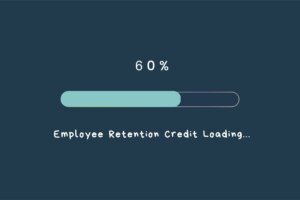Last week’s posting noted that (except for the donor acquisition process) you should not be in the business of cold-solicitation, and that your organization should have done some research on your prospective donors. And, btw, even if someone has given previously, s/he is still, for the purposes of this discussion, a prospective donor.
That posting also referenced the concept of having the right person asking for the right amount, at the right time, and under the right circumstances.
Also noted was that once you have a “relationship” with your prospective donor, the questions of who the right person is, what the right amount might be, and when-and-where to ask, will get answered !!
I must make a distinction, here, between the lower-rated and the major donors. The former are those who are asked to give via mass solicitation methods – direct mail, telephone, “fundraisers,” etc., and the latter are those who are solicited on a face-to-face basis.
It doesn’t take a lot of analysis to recognize that the larger the gift you are seeking, the more time/effort/resources you’ll have to put in to realize that gift.
For the lower-rated donors, those whom you’ve acquired via a donor-acquisition process, the relationship often boils down to thanking them for their gifts and keeping them apprised of how their gifts are making a difference….
If you want the major gifts, there has to be a one-on-one relationship with the (prospective) donor. Typically, that relationship is with a current major donor and/or a board member. (See: What is a Major Gift? & Who is a Major Gift Prospect?)
Such a relationship is not limited to discussions of the organization’s mission and activities. It may begin with an introduction by a mutual friend/acquaintance. It may be a result of a “chance” meeting – based on researching where would be a good place for that to happen. It may happen when the prospect attends an event conducted by the organization. It can happen in any number of circumstances.
As the relationship develops, and the parties get to know each other … as people, not as a donor prospect and a representative of an organization, they are learning about each others interests and needs.
Keeping in mind that donors give to satisfy their own needs, not the needs of a nonprofit organization, over time the relationship uncovers what is important to the prospective major donor.
This is not being sneaky or underhanded. Anyone who is a potential major donor is unlikely to be an innocent, s/he has likely been cultivated by other organizations, and has likely been solicited by other organizations. These major donor prospects will recognize the process, and are unlikely to be offended by it.
As the relationship develops, the person who is getting to know the prospect is also becoming the person who will come to learn what it will take to get the prospect to want to make that major gift. That person will learn what the right amount would be, and what the right timing and circumstances would be. That person becomes the “Right” person.
If you are the “Right” person to establish a relationship with a prospective donor, the process of getting to know and educating the prospect about the organization is the process of Cultivation. It is a process that takes many different forms, and is adapted to the needs of the prospective donor.
Next Week, some thoughts about donor research.
=-=-=-=-=-=-=-=-=-=-=-=-=-=
Have a comment or a question about starting, evaluating
or expanding your fundraising program?
AskHank
=-=-=-=-=-=-=-=-=-=-=-=-=-=
Have you heard about
The Fundraising Series of ebooks?
They’re easy to read, to the point, and inexpensive ($1.99-$4.99)
=-=-=-=-=-=-=-=-=-=-=-=-=-=
If you’re reading this on-line, and would like to comment/expand on the above piece, or would just like to offer your thoughts on the subject of this posting, we encourage you to “Leave a Reply.” If you’re reading this as an email, and you want to comment on the above piece, email Comments to offer your thoughts. Your comments, with appropriate attribution, could be the basis of a new posting.
 Sections of this topic
Sections of this topic
















